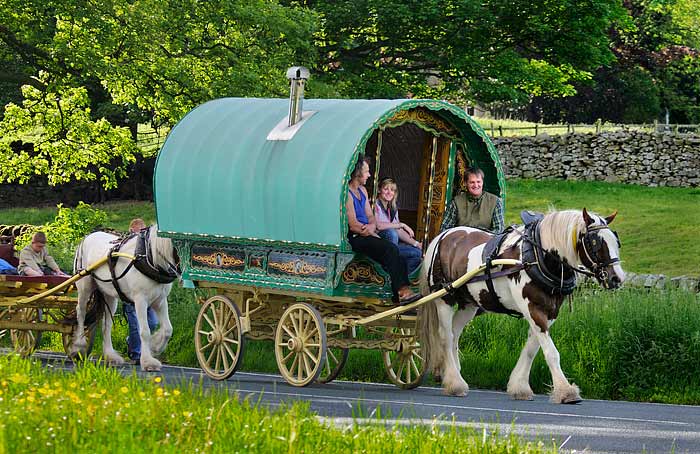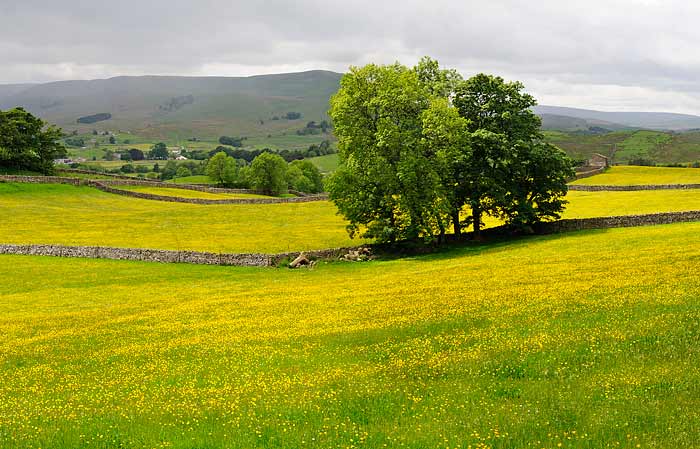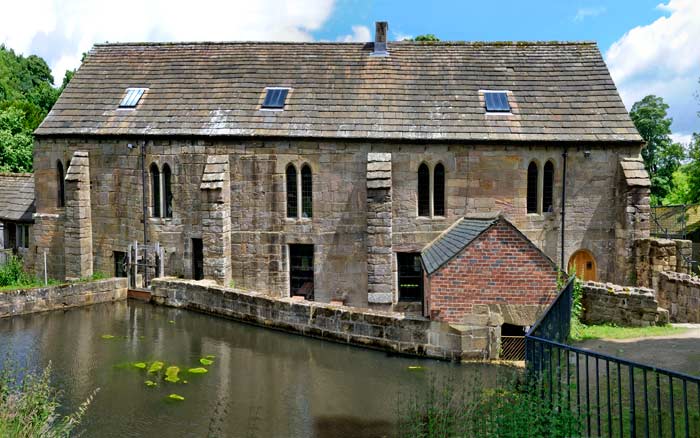|
Page 3 - A further selection of HampshireCam images from 2008
| |

|
Yorkshire Dales ~ Travellers make their way back from Appleby Horse Fair along Wensleydale. |
| |

|
Wensleydale and Upper Swaledale are said to have the finest hay-meadows in the Yorkshire Dales and arguably England. In summer the fields are full of colour with over 130 species per field including melancholy thistle, red clover, globeflower. and wood crane's bill. The meadows are home to insects, bats and other mammals and the nesting sites for the Curlew, Yellow Wagtail and many other birds. The meadows are the result of long-term traditional management, with the stock being removed at the start of the growing season. The hay crop is allowed to grow and not cut until late July when its left to dry and then baled and stored for winter feed. Click on the photograph for a larger image. |
| |

|
The River Ure flowing over the spectacular Aysgarth Falls in Wensleydale. The triple falls were used in the film "Robin Hood, Prince of Thieves" as the setting for a fight between Robin Hood and Friar Tuck. |
| |

|
Fountain's Abbey ~ The eight hundred year old abbey is located just to the west of Ripon, North Yorkshire. Set in the beautiful Skell valley a riot at St Mary's Abbey in York led to the founding of Fountains Abbey in 1132. The thirteen exiled monks were given protection by Thurstan, Archbishop of York, who provided them with a site in the valley of the River Skell to found a new and more devout monastery. Within a few years the settlement at Fountains was admitted to the Cistercian Order who lived a rigorous daily routine of long periods of silence, a diet barely above subsistence level, and wore the regulation habit of coarse undyed sheep's wool which earned them the name White Monks. |
| |

|
The Cellarium ~ The amazing cellarium roof escaped Henry VIII's dissolution of the abbeys in the16th century and has remained intact. It was the Cellarium where the lay brothers ate, slept and socialised after the Abbey introduced the Cistercian system of lay brothers. The brothers were usually illiterate and relieved the monks from routine jobs, allowing them to dedicate more time to God. Many served as masons, tanners, shoemakers and smiths, but their main task was to look after the Abbey's vast flocks of sheep, which lived on the huge estate stretching westwards from Fountains to the Lake District and northwards to Teesside. |
| |

|
The oldest building on the estate, Fountains Mill earliest parts are older than any visible part of the abbey. The mill is perhaps the best preserved watermill in England and the only 12th century Cistercian corn mill in Britain. A major conservation project jointly funded by English Heritage and the National Trust began in 1993. The Trust owns and manages the Mill while English Heritage is guardian on behalf of the government and repairs and maintains the building. |
| |

|
A beautifully marked Peacock butterfly. |
| |

|
Raby Castle ~ Situated in County Durham, Raby Castle was built in the 14th century by the Nevill family and today is one of England's largest and most impressive of medieval castles. Raby has been the seat of the Barnard family since 1626, today it's home to Harry John Neville Vane, the 11th Lord Barnard. |
| |

|
The formal gardens were established in the 18th century and designed by Thomas Wright. The walls of the gardens were constructed from locally made bricks, the gardens themselves were considerably altered during the last century. |
| |

|
Fallow Deer ~ Surrounding Raby Castle is a 250 acre deer park and home to herds of Red deer, the largest British wild land mammal, and the smaller Fallow deer, both herds contain the descendants of deer preserved in this area since Norman times. |
| |

|
Lymington ~ The new National Park sign at the start of the final section of the Solent Way leaving Lymington, this 6-mile section follows the coastal path to Keyhaven before finishing at Milford-on-Sea. |
| |

|
A Meadow Pipit having just caught a cricket. |
| |

|
River Itchen, time to relax before a journey home. |
More photographs on Page 4 - Click here
Back to the Home Page
Caption details are based on the latest available information and are accurate to the best of my knowledge. Although the images are heavily compressed you are welcome to use them for your own non-commercial use. If you do please credit HampshireCam or add a link to these pages.
All Photographs copyright David Packman © 2002 - 2009 (All Rights Reserved) |
|